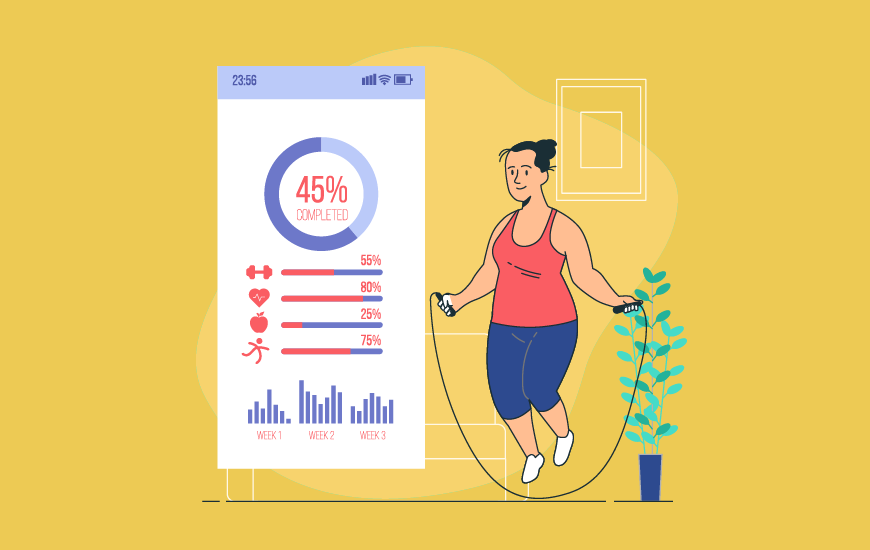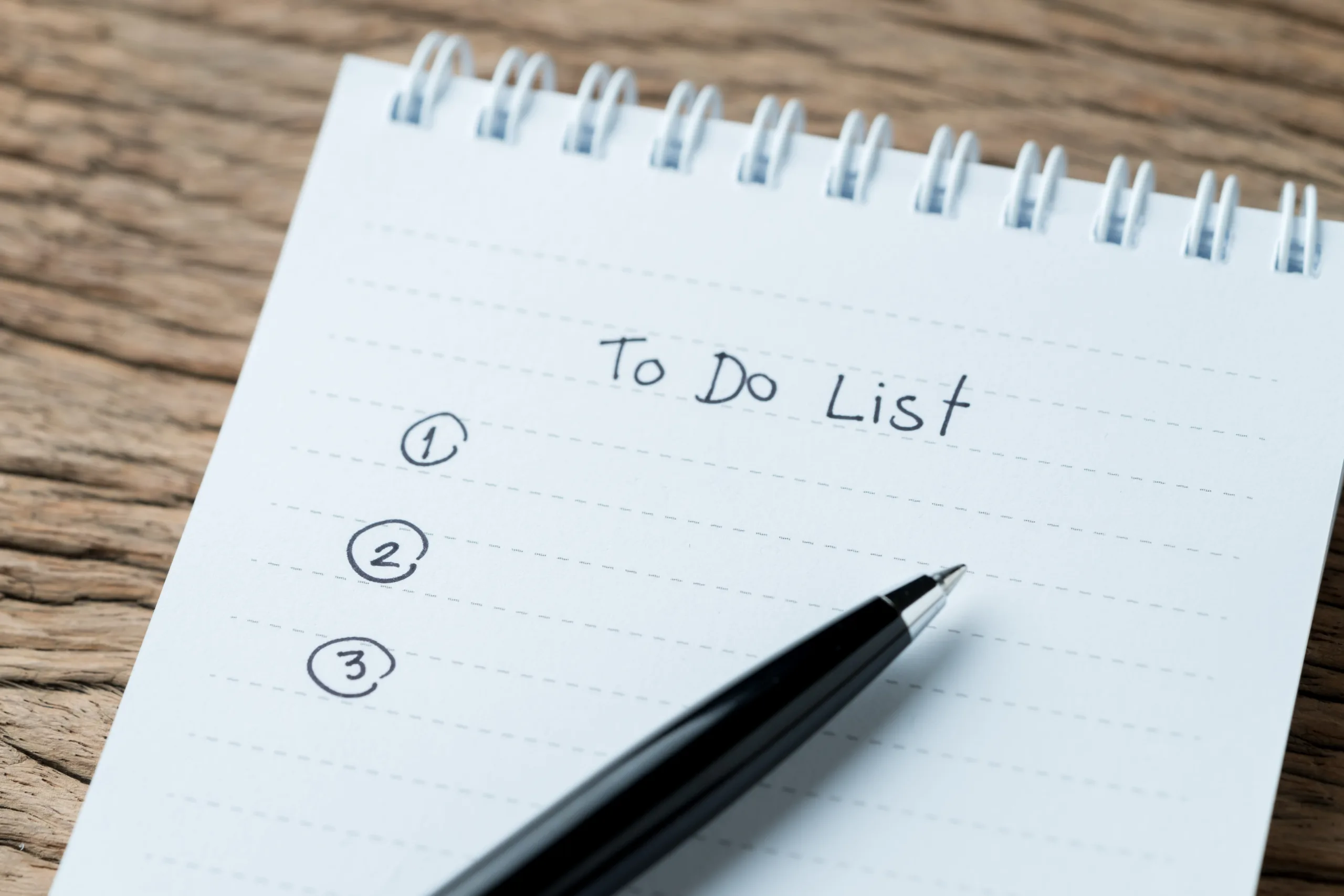I Tried the MindShift CBT App in 2023: Here’s My Review
I am a worrywart. One of the earliest memories I have is of my family’s move to another state. Moving boxes were loaded in the bed of a pickup truck as I stared out at the freeway, worrying about what would happen next. What if the boxes fly open and my clothes end up on the highway? What will the new town look like? What if our neighbors don’t like us? What if someone breaks into our new house?
Since then, I’ve always worried about the future, creating worst-case scenarios in my head, and even planning for them as a means to cope. So by the time I started therapy, it didn’t take long for me to be diagnosed with generalized anxiety disorder. In addition to going to therapy, I wanted to try to improve my coping strategies—so I jumped at the chance to try MindShift CBT.
MindShift CBT uses techniques from cognitive behavioral therapy, or CBT, to help users manage symptoms of anxiety or stress. Cognitive behavioral therapy is a type of evidence-based therapy that targets thought patterns that negatively affect a person’s behaviors and emotions. By acknowledging and challenging destructive thought patterns, you can then replace them with more positive and realistic thoughts. Often I forget what I learned in therapy each week, so testing MindShift CBT allowed me to really hone in on and practice tools for coping with anxiety.
Initially, I didn’t expect much out of MindShift CBT because I had not heard of the app before—and I’ve had my fair share of experiences with mental health apps. But, after using MindShift CBT regularly for five weeks, I started to notice what features seemed to support what I needed. MindShift CBT exceeded my low expectations, but I know my consistent use of the app played a role in its effect. Here’s what to know about the app if you’re thinking of trying it too.
Getting Started With MindShift CBT
The app’s step-by-step instructions, calming colors, and organized layout set it apart from other apps, such as Calm and Happify, which can seem overwhelming at first glance. Also, MindShift CBT is free to download and use and is available for both iOS and Android, increasing its accessibility beyond that of its competitors.
When I first opened the app, I was greeted by the “Check-In” page, which is essentially a mood tracker. I could move the slider up or down to describe my mood at that time, ranging from good and great to okay to awful. Once I submitted my check-in each day, I was prompted to rate my anxiety on a scale of 0 to 10, describe what was going on at that moment, and add what symptoms of anxiety I was experiencing at the time. The symptoms were in a checklist format and included physical and emotional symptoms, such as a racing heart, dry mouth, trouble concentrating, and the urge to avoid/get away.
Daily Check-Ins
Though the app does not explain it, the check-in process is an important first step in cognitive behavioral therapy. I needed to properly identify what I was feeling and thinking before I could notice whether it was an unhelpful or automatic thought.
It was also helpful to view my Check-In Summary, which was a simple bar graph of the anxiety levels I had logged over time. However, MindShift CBT only saves up to two weeks of moods at a time. This might be frustrating if you like to keep track of your mood over a longer period or show your therapist your mood log like I did, but I think it is generally a useful tool.
MindShift CBT
Identifying the emotions I was experiencing not only increased my mind-body awareness, but helped me better understand my emotions on a day-to-day basis.
I could pinpoint the emotion I was feeling and think of the cause behind that emotion. Additionally, the check-in activity allowed me to pay attention to how the emotion was displaying itself somatically, such as a racing heartbeat in my throat as my anxiety grew.
After I completed my check-in, I would scroll down to the tools. These are an important part of how CBT works to change behavior and thought patterns, such as by practicing new coping and problem-solving skills. The app’s tools included “Healthy Thinking,” “Chill Zone,” and “Taking Action.”
Activities for Healthy Thinking
The three exercises for healthy thinking included a thought journal, coping cards, and belief experiments. I could do as many exercises as I wanted in a day, which was helpful for those more anxiety-provoking days. Each one took me between one and five minutes, depending on how much I wrote or how long I took to think through something.
My Thought Journal
Journaling is a well-known coping mechanism for stress, anxiety, and depression. The app’s thought journal is broken down into three steps. First, I could write what was worrying me and why. Next, I was prompted to identify which “thinking trap” this worry fell under.
“Thinking trap” is another term for the cognitive distortions CBT works to identify. These include should statements (negative thoughts that cause or exacerbate fear and doubt), over-generalizing (coming to overarching negative conclusions that exceed the facts of the situation), and catastrophizing (assuming the worst-case scenario).
Each thinking trap is a pattern of unrealistic thinking, such as wondering if everyone hates you because you showed up to the meeting a few minutes late. I was given the option to choose from nine thinking traps, but the app includes an additional “unsure” choice if the other options do not apply.
MindShift CBT
After I identifed a maximum of three thinking traps, MindShift CBT walked me through how to balance, or challenge, my worry with a positive reframe. The app guided me through this process based on the thinking traps I chose. For example, if I chose the “catastrophizing,” the app asked me to reflect on three questions: Is this a hassle or a horror? Will this still matter in a year? What’s the worst that could happen, and how would I cope?
I appreciated that the thought journal entries were stored in the app even past the two-week mark of the check-in summary. It was helpful in noticing trends in my thinking as well as recognizing how I improved my thinking across the five weeks.
In my anxiety, I overthink every possible outcome. I began to open the thought journal first to brain dump and clear my mind before continuing with the other activities. The app set structure and instilled hope for me without sacrificing my ability to choose which activities I wanted to do more of.
Coping Cards
The next exercise, coping cards, involved virtual flashcards with affirmations listed on them. Affirmations play a role in CBT by introducing positive, realistic thought patterns to replace negative automatic thoughts. For example, one read: “I don’t know what others are thinking, so I need to stop guessing.”
I see how this aspect of the app might benefit individuals who regularly use affirmations or who seek words of reassurance, but affirmations aren’t effective for me because I haven’t been able to use them consistently.
So, I tended to avoid using the coping cards. It didn’t negatively affect my experience using MindShift CBT, but it did leave me wishing the app had more activities to teach users tangible coping strategies.
Belief Experiments
“Belief experiments” is a tool provided by MindShift CBT to develop healthy thinking based on a CBT technique called cognitive restructuring, which is a process of noticing negative or irrational thought patterns and intentionally challenging their validity. For instance, a negative thought of “Everyone hates me” could be challenged by asking oneself, “Is there any evidence that shows this isn’t true all of the time?”
First, I was prompted to identify an area of my life that worried me, such as daily life, work, or relationships. Then, I could design an experiment to try—this meant I would make a prediction about the outcome of an upcoming situation in my life that I was concerned about. (The app gave an example of asking a question at work when you are afraid people will laugh at you.)
MindShift CBT
When I asked that question at work, did people really laugh at me? Did it turn out as badly as I thought it would, or was it not the big deal I thought it would be? This was a useful way of questioning my negative thoughts and adjusting my real-life expectations.
By making a prediction about how the situation will go and setting a date after the situation occurs for the app to remind me about it, I could reflect on whether reality aligned with my prediction—or if my anxiety got in the way of my thinking.
I appreciated the length of time that these exercises took. It felt customizable to what I needed at that moment. For instance, if I was extremely anxious one day, I could take as much time as I needed to write multiple thoughts out in the thought journal. If I had a quick minute before I needed to make dinner, I could look at a few coping cards and remember what strategies to implement when I needed to.
Meditations in Chill Zone
In addition to the tools to manage anxiety, the app has a “Chill Zone” consisting of short, recorded guided meditations.
MindShift CBT
There are nine audio recordings useful for various situations and needs, including public speaking, body scanning, or test anxiety.
Even though the recordings were about different experiences, the language used felt repetitive. It was strange to me that the app only included nine audio recordings when other apps (like Calm) have hundreds or even thousands. I didn’t use the meditations often, but the body scan and mindful breathing ones were helpful in moments when I needed to be still and reset my nervous system.
Mindfulness can be used in CBT as a coping strategy to clear your thoughts and implement positive behaviors instead of reverting to the negative cycles of unhelpful thoughts and actions. The idea is that by focusing on the present and becoming aware of those unhelpful thoughts, you can recognize them in the future as they crop up and know that you have an alternate way of reacting to them.
Changing Behaviors by Taking Action
The third section for “Tools” focused on adapting old behaviors or adding in new, more positive behaviors. I could identify fears that were holding me back and plan out small steps necessary to overcome them. The app provided information about healthy habits and possible steps I could take to change my habits, such as reducing alcohol, starting a hobby, or connecting with friends. The app’s Healthy Habits exercise centers around psychoeducation—a structured way to provide information about mental illness and mental wellness based on cognitive behavior therapy—to explain why each habit can be useful and how to practice it.
MindShift CBT
MindShift CBT outlined “Comfort Zone Challenges” for me in four topics, including becoming independent, tackling social situations, dealing with perfectionism, and facing the unknown. Comfort Zone Challenges are intended to replace negative patterns of behavior with more positive and productive behaviors, which is an important aspect of CBT. These challenges are also a small form of exposure therapy, a technique of CBT that involves facing your fears in real life to learn that the outcomes are not as dire as you thought they would be.
My favorite challenge I tried was to mispronounce or misuse a word on purpose to step out of my attempt to achieve perfection. While it was a small thing to do, it put into perspective other small steps I could take to grow more comfortable with not being right all of the time.
Pros and Cons
My experience with MindShift CBT was largely positive, but I recognize that the app may not be for everyone. It is important to weigh the positives and negatives to find what best fits your needs.
-
Free to use
-
Focuses on the sources of anxiety or stress
-
Incorporates psychoeducation
-
Offers lots of activities to try
-
Developed by an established mental health organization
-
Has a streamlined layout
-
Uses CBT interventions in a simple, clear way
-
Not effective for crisis situations or severe anxiety symptoms like panic attacks
-
Uses a large amount of text
-
Only saves mood tracking entries for two weeks
-
Meditations are repetitive
Final Thoughts
I was generally pleased with my experience with MindShift CBT. I think the app could be good for people who are seeking a way to manage their day-to-day symptoms of stress or worry. If you worry about anything, from work to peer pressure, consistently spending five minutes a day with the app might improve your symptoms by gradually helping you build the skills necessary to cope.
I felt that the app was missing a few key elements.
For example, relaxation skills are also important in the CBT model as they can help reframe thoughts to be more objective and positive. Adding a checklist of coping mechanisms and a way to keep track of what was effective could be a way to enhance the coping cards and healthy habits exercises. I also expected more exercises to be available, specifically exercises intended to develop coping skills.
That said, I was positively surprised by the amount of psychoeducation included in the app.
MindShift CBT takes the time to outline and explain what might be occurring in the body, mind, and behaviors behind each feeling, such as panic, general worry, perfectionism, social anxiety, and phobias.
Thankfully, MindShift CBT is a free app, so there is no harm in trying it for a few weeks and seeing if it is effective for you.
It takes consistency to build the habit of using the app, but once it is a part of your daily routine, I think you’ll start to see MindShift CBT’s impact in shifting your thoughts and behaviors in a more positive direction.
Hopefully, you’ll stop overthinking like I did—though I’m questioning now whether I entered my mood on the Check-In page for today.



